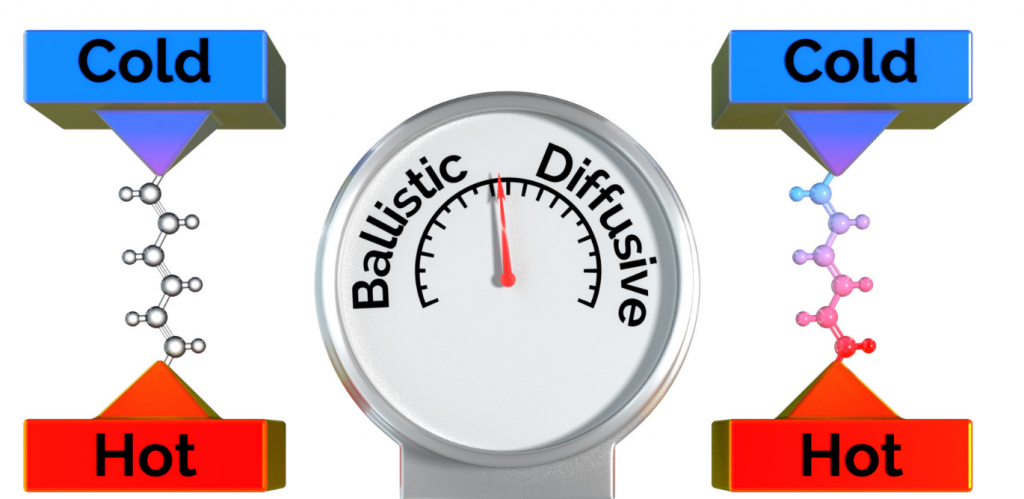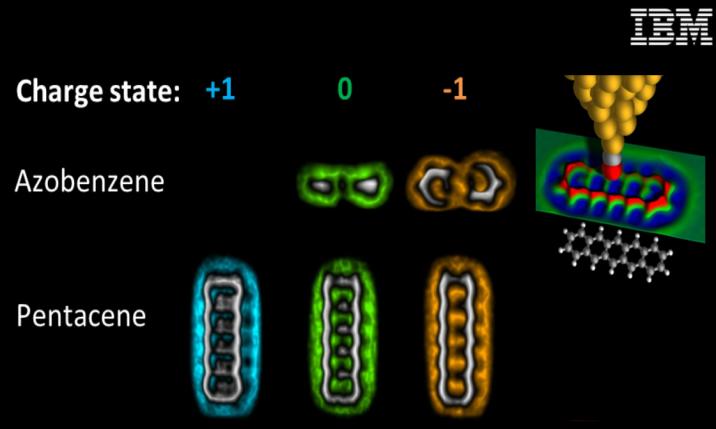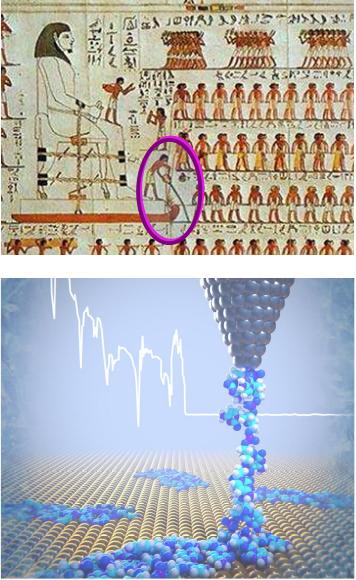Currently, we have 3 PhD positions available. Below we provide a bird’s-eye view of each project. Are you curious? Drop us a line (see how to apply).
Nanoscale Heat-Transport

Did you know that, at the nanoscale …
thermal energy can be transported through a wire without warming it up?
According to Fourier’s law, heat conduction necessarily results in the formation of a thermal gradient in the wire connecting a hot (A) and a cold bath (B). However, recent experiments showed that at the nanoscale heat conduction may proceed without building up such gradient – thus in direct violation of classical laws. Although Fermi already hypothesized about this exotic form of heat transport, our understanding is still incipient. In this day and age, where nanotechnology is recognized (e.g. by the EU) as a major proponent to address our societal challenges, it becomes imperative to understand and control heat transport at the nanoscale. This is arguably one of the largest pending challenges of Nanoscience and Nanotechnology. Join us to address this challenge by developing an innovative theoretical/modelling framework that capable of providing a predictive power to design heat transport at the nanoscale!
In co-supervision with Prof. Juan Carlos Cuevas.
Manipulation of molecular charge states

In 1989, Donald M. Eigler and collaborators, manipulated 35 xenon atoms to spell IBM on a nickel surface. This playful endeavour marked the beginning of a profound revolution in nanoscience: the realization of Feynman’s vision of an atom-by-atom design of complex nanostructures. Since then, scanning probe microscopy (SPM) developed increasingly sophisticated manipulation capabilities recently culminating with the manipulation of the charge state of an individual molecule with an unprecedented spatial resolution (1Å, charging site). Join us in this fascinating endeavour where first we shall develop a modelling framework (based on a combination of advanced ab-initio with non-equilibrium excited states molecular dynamics) that shall guide future experiments designed to control the operation of molecules as basic nanoscales devices (e.g. as molecular motors and acceptor-donor complexes).
In co-supervision with Prof. Rubén Peréz.
Superlubricity ‘à la carte‘

Did you know that, …
23% of the world’s energy consumption originates from friction? [Holmberg]
and that it is impossible to predict a priori the friction coefficient (µ)of a given contact?
Although friction is nearly everywhere, we tend to remember it only when it is almost absent – as when slipping on a banana peel ;). This ubiquitous presence across disparate length scales (earth-quakes, car engines down to molecular machines) endows friction of the utmost practical interest, and thus attempts to control it are as old as civilization (see Egyptian pouring lubricant in figure adapted from Fall et al). However, a lack of a fundamental understanding of friction has hindered our predictive power. In a renewed attempt to control friction by atomistic design and bridging the gap across different length scales, the fields of nanotribology and nanomanipulation were established. Among other notorious achievements, the discovery of structural-superlubricity (an ultralow friction state) stands out. However, despite numerous remarkable advances, we are still unable to control it. In a synergistic liaison with fellow experimental groups, we have found that under certain circumstances superlubricity can be tamed thanks to a surprising violation of the 1st law of friction … (to be continued). Join us in our innovative strategy to control superlubricity and also chemically engineer energy dissipation in synthetic molecular machines!
How to apply?

We are looking for outstanding students that are eager to participate in our research (motivation/drive is the key). We welcome applicants with a background in Physics, Chemistry, Materials Science, or related areas with a Master’s degree (or about to be finished). Send us an email to guilherme.vilhena@[REMOVE THIS]uam.es including: cover letter, CV and names/email of at least 1 reference contact.